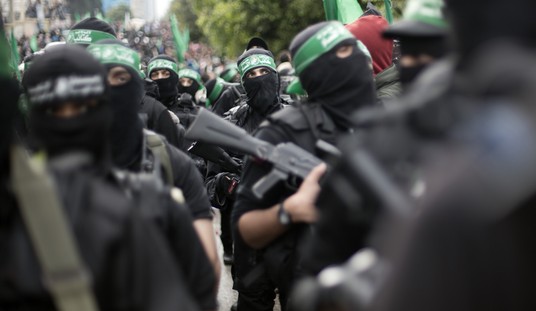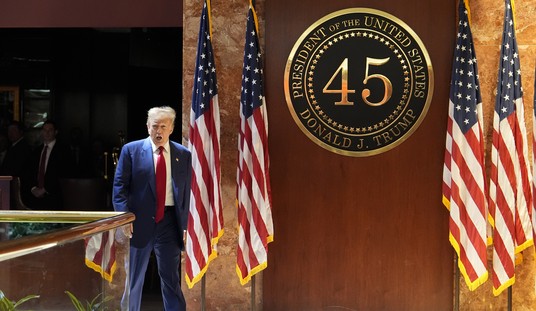On Saturday, "Marco Rubio" was trending on Twitter, with the social media platform's accompanying message sharing that "A Tweet from Senator Marco Rubio about COVID-19 draws criticism, prompting many to point out the virus’ hospitalization rate and death toll." As is often the case with these trends, though, the people freaking out and making it trend are missing the point.
Record numbers testing positive for a sore throat isn’t a crisis
— Marco Rubio (@marcorubio) December 31, 2021
And people in the hospital for car accidents testing positive isn’t a surge
The real crisis is the irrational hysteria which has people with no symptoms waiting hours for a test or missing work for 10 days
Our friends at Twitchy highlighted some of the freak outs. A particularly bad take came from Rep. Tom Malinowski (D-NJ), who made a comparison to the lives lost in the September 11, 2001 terrorist attacks.
1,181 of our fellow Americans died yesterday of this "sore throat." The toll is equivalent to two 9/11 attacks a week.
— Tom Malinowski (@Malinowski) January 1, 2022
I'd be all for ending restrictions and sensible risk management if everyone at least got vaccinated. Please encourage that and stop downplaying the crisis. https://t.co/E4SQoc9j2a
MSNBC host Mehdi Hasan also tweeted out a take to do with September 11.
Covid continues to produce a 9/11 death toll in this country every 3 days but one of the GOP's biggest hawks - in between posting verses from the Bible - shows he doesn't actually give a damn about American lives lost and thinks the worst pandemic in a century is a "sore throat." https://t.co/adqU5mY6PB
— Mehdi Hasan (@mehdirhasan) January 1, 2022
Other than such ridiculous and insensitive takes comparing a terrorist attack to the Wuhan coronavirus, such freak outs are missing the larger points of Rubio's tweet.
The senator is clearly referring to the Omicron variant, which, as we've covered from the start, brings with it "mild" symptoms. That's according to those on the ground in South Africa, where the variant was first announced in November. Data from South Africa also showed that the surge passed with few deaths. And, multiple studies from several countries have also confirmed that the Omicron variant is less likely to lead to hospitalizations than the Delta variant.
Recommended
That being said, the Omicron variant is more transmissible and highly contagious. That brings us to the next part of Rubio's tweet, about how "people in the hospital for car accidents testing positive isn’t a surge."
People are tested for the virus when they are admitted to the hospital. If someone tests positive but they presented for something else, they are being hospitalized with Omicron, and not for it.
In fact, "science" himself, Dr. Anthony Fauci, as Leah highlighted, acknowledged this point as it applies to children during a segment with MSNBC’s Ayman Mohyeldin on Wednesday.
Data from the South African Medical Research Council showed that most admissions in Tshwane were such incidental admissions, where someone was hospitalized with COVID, but not because of it.
Rubio also spoke about "people with no symptoms waiting hours for a test or missing work for 10 days."
In New York City, but also in other major cities, people have indeed been waiting outside for hours to get tested. In doing so, they're surrounding themselves with people who may or may not have the virus and make it more likely for them to become infected. What's worse is that these test results have been severely delayed.
The Centers for Disease Control (CDC) recently shortened the days of quarantining to five days, as Julio covered on Wednesday. It indeed used to be ten days, and places were experiencing worker shortages.
Yet California has turned to an even stricter set of guidelines, as lamented by former gubernatorial candidate Kevin Kiley, an assemblyman in California.
After all the suffering from isolation in 2021, California begins 2022 with “stricter” quarantine rules than the CDC. Idiocy and callousness intersect once again.
— Kevin Kiley (@KevinKileyCA) January 1, 2022
The state's guidelines recommend that those who have tested positive but are asymptomatic can break quarantine after five days only after a negative test result, as Rong-Gong Lin II and Luke Money reported for The Los Angeles Times.
Rubio arguably did not go far enough, actually, in his tweet. As I reported on Sunday, medical directors in Vermont are warning of asymptomatic people overwhelming emergency rooms there because they're looking for a PCR test after testing positive from a rapid test. Julio covered how it's happening in New York, too, though.
The tweet did refer to a "real crisis," which Rubio called "irrational hysteria." Such "hysteria" has led to isolation and, as we are seeing again after what should have been a return from Christmas break, more school closings again. The closings are not only not necessary, but have had catastrophic and long-lasting effects.


